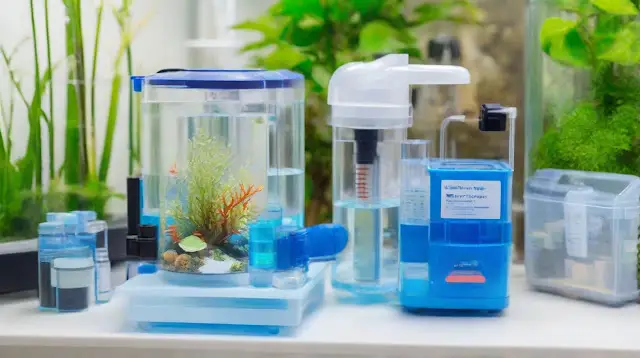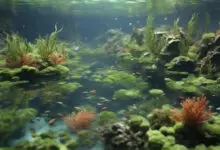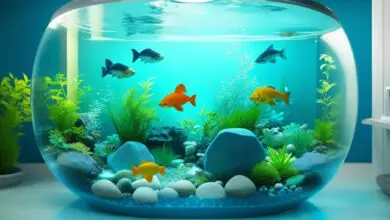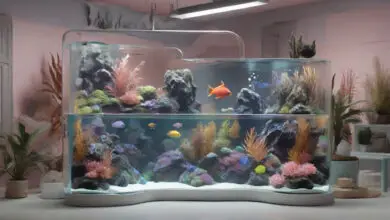Advanced Water Testing for Optimal Tank Health

Water quality is very important for keeping tanks healthy. Good water quality keeps fish and plants alive. It also keeps the tank clean. Testing the water lets aquarium owners know if the water quality is good or bad.
There are many things in water that are important to test. Testing helps owners keep the best water for their tanks. This allows fish, plants, and other tank creatures to stay healthy.
Why Water Testing is Important
Water testing is very important for tanks. Testing shows if the water has what fish and plants need. It also shows if there are bad things in the water. Both of these are important to know.
Fish give off waste and chemicals. Plants also give off chemicals when they grow. Bad chemicals and wastes build up over time. They make the water bad if tank owners do not remove them. Water changes take out bad things. But owners need tests to know when the water needs changing.
Tests also show if good chemicals are too low. Fish and plants need good chemicals like calcium and magnesium. Owners can use additives to put these back in if low. But they need testing to know this first.
The Main Aspects of Water Quality Testing
Many things make up water quality. All tanks are different as well. But there are basics to test no matter the kind of tank. These main aspects give a good picture of overall water health.
1. pH
pH measures if water is acidic or basic. The pH scale goes from 0 to 14. Low numbers are acidic and high numbers are basic. Fish have a pH range they do best in. Out of this range stresses fish. And very high or low pH can kill fish fast.
Most tanks want a pH of around 7. This is neutral, neither acidic nor basic. Different fish types can handle higher or lower pH. But all fish do best with stable pH. Fast pH swings cause them harm. Good pH for most tanks is between 6.5 and 8.5.
2. Ammonia
Ammonia comes from fish waste and rotting food or plants. It is very toxic for fish, even small amounts. Ammonia burns fish gills and stops oxygen flow in their blood.
Tanks always have some ammonia. But any amount over 0.25 ppm harms fish. At 1 ppm it can kill them. Nitrifying bacteria remove ammonia. Cycled tanks have enough good bacteria to keep ammonia low. But owners should still test levels in case bacteria fall behind.
3. Nitrites
Nitrites also come from fish waste and rotting food or plants. They are less toxic than ammonia but still very harmful. Any level over 0 ppm stresses fish. Over 0.25 ppm can kill fish.
Good nitrifying bacteria turn ammonia into nitrites. Other helpful bacteria then turn nitrites into nitrates. These bacteria all take time to grow their populations though. Before they catch up, nitrites rise to unsafe levels if ammonia gets too high.
4. Nitrates
Nitrates come from fish waste as well. They are the least toxic but still bad in high levels. They allow over 50 ppm before harming most fish. But lower is better, with under 20 ppm being safe.
Nitrates only leave tanks through water changes and plant or algae growth. When nitrates get too high for tank life, a water change is due. Nitrate level along with pH are the main signs of when to change water.
Important Optional Tests
The main four above are crucial to any tank. But other chemicals also very much impact fish health. Here are some other useful tests many owners choose to run.
1. KH and GH
These test water harness. KH is carbonate hardness and GH is general hardness. Both show positive minerals for fish health. Calcium and magnesium make up most GH. Carbonates like lime make up most KH.
Water that is too soft harms fish health. Soft water lacks these key minerals and makes pH swing fast. KH over 3 degrees and GH over 5 degrees keeps tanks more stable. Adding minerals fixes low values if needed.
2. Copper and Heavy Metals
Many tanks need copper tests. Copper kills inverts like snails and most shrimp at very low levels. It comes from some tap water, many medicines, and plant additives. Owners with shrimp tanks watch copper levels closely.
Other heavy metals also harm fish at low levels. Lead, iron, cadmium, zinc, and more can build up. Test kits for these metals cost more but help diagnose odd fish illnesses.
3. Phosphates and Silicates
These chemicals are nutrients for nuisance algae. They allow hair and green spot algae to take over tanks. Tap water often adds these without owners knowing. And some owners accidentally add them via dirty substrate or decorations.
Once these nutrients are in tanks, algae keeps coming back without big cleaning. Testing identifies if phosphates or silicates are the hidden issue. Then owners can use chemical filters or RO water for future water changes.
Nitrogen Cycle Basics
The nitrogen cycle is very important for testing. It shows how fish waste turns to ammonia then nitrite. Bacteria eventually make these less toxic at each step until ending with nitrate. Tanks rely on this cycle to keep poisonous chemicals in check.
But tanks need the right amounts of bacteria first. Cycling tanks grow these bacteria so they can handle future fish and their waste. Knowing when tanks finish cycling takes testing three chemicals: ammonia, nitrites, and nitrates.
Ammonia and Nitrites Fall, Nitrates Rise
Uncycled tanks start with zero levels of all three chemicals since no fish live there yet. Once fish go in, their waste makes ammonia climb fast without bacteria to remove it. This ammonia spikes to unsafe levels, stressing and potentially killing fish.
The first bacteria nitrosomonas grow and start converting ammonia to nitrites. But nitrites also harm fish, so numbers stay too high at first. Finally nitrobacter bacteria convert the nitrites into safer nitrates.
In an ideal finished cycle, ammonia and nitrites test at zero ppm. And nitrates test at some low but present number like 10-20 ppm. This third stage means tanks finally grew enough good bacteria. These bacteria can now process all fish waste at safe chemical levels going forward.
Monitoring Levels
Cycles take 4-8 weeks for fishless cycling, 2-6 weeks for fish-in. Testing chemicals every few days monitors the progress. Owners need patience as bacteria grows to meaningful numbers.
Once tanks cycle, chemicals still need routine checking. If anything starts climbing, bacteria might have gotten compromised. Rising ammonia or nitrites means immediate water changes to save fish. And rising nitrates over 40 ppm warrants a change to bring levels back down.
Monitoring numbers keeps bacteria balanced with current fish waste loads. This takes work but keeps tanks healthy long-term for fish and aquatics.
Basic At-Home Test Kits
Test kits for home use are easy and affordable. They give accurate readings compared to expensive lab testing. Many options exist in liquid reagent and test strip formats. But some test types work better than others.
Liquid Reagent Kits
These kits use liquid drops that react and change water sample color. The final color after adding reagents matches to color charts. Color depth determines chemical concentration. Most companies making these kits include charts for accurate matching.
Liquid tests cost more than strips upfront. But they give more precise readings with hundreds versus tens of readable color results. And they test chemical levels as low as water needs. This makes them ideal for tank safety.
The most popular brands are API and Tetra making these liquid kits. API test kits are the gold standard to most fishkeepers. But Tetra, Red Sea, and Salifert also have good liquid options.
Test Strips
Strips are paper pads dipped in water samples. Chemicals in the strips react and change color based on what is in the water. Users then match the color change to bundled charts. If chemicals in the water are above a certain level, the strips change to the matching color.
Strips are much more affordable and easier to read than liquid kits. But their accuracy is not as high for aquarium testing. The color matching contains fewer shades making exact matches difficult. And strips rarely read the ultra-low chemical levels fish need.
Still, strips serve most beginners well for a tank startup budget. Owners can later upgrade to liquid kits for more precision. Popular strip brands are Tetra, API, and Sera offering wide chemical testing.
Proper Testing Technique Matters
While test kits themselves are accurate, bad testing gives bad readings. So technique matters for getting right results to make good tank decisions. Following best practices takes patience but leads to precision.
1. Clean Tools
Dirty tools contaminate samples and throw results off. Bottles and tubes with scale or residue can react with tests oddly. Users should rinse all containers out with tank or dechlorinated water before each test. Never use soap, and allow tubes to fully dry before adding chemicals.
2. Full Kits Together
Full test kits give better accuracy when all chemicals run on the same sample. Running ammonia on one sample then nitrites in another can miss how levels correlate. Users should collect enough water to complete all desired tests each time.
3. Enough Light
Matching colors needs full spectrum light shining on samples. Kitchens at night cause wrong readings. Owners should test near sunlight through windows, using lamps if needed. Natural light avoids odd colors from weak bulbs.
4. Patience!
In a rush, waiting full reaction times seems long. But skipping steps makes results worthless. Every chemical needs enough contact for full color change. Set timers and avoid other tasks until tests fully develop. Few extra minutes saves tank inhabitants.
Special Considerations for Saltwater Tanks
Fresh and saltwater tanks share some testing needs but also diverge. Marine fish and corals need much more stable water chemistry. Standard tests help monitor their basic health, but saltwaterhas added dangers to watch for.
More Focus on Alkalinity
The levels of positive minerals has a formal name in marine tanks: alkalinity. This measures bicarbonates, carbonates, and hydroxides helping buffer pH swings. Tracking alkalinity gives a better idea of water stability and mineral levels than GH or KH alone.
Alkalinity also relates to pH closely in saltwater. When alkalinity falls, pH crashes after it. So keeping the alkalinity high via additives maintains better pH. API and other brands sell combined alkalinity test kits. 160-180 ppm is a good alkalinity range for marine tanks.
Calcium is Critical
While GH measures general minerals, saltwater fish and corals rely specifically on calcium. Hard corals use calcium to build their skeletons. And marine life depends on proper calcium in cells to function.
API makes calcium test kits formulated for the expected 400-450 ppm calcium levels in reefs. Without enough calcium, corals weaken and fish develop skeletal issues. Routine calcium testing gives peace of mind for balanced mineral levels.
More Dangerous Toxins Appear
Unique toxins threaten saltwater that freshwater does not deal with often. Copper becomes a problem like mentioned before. But there are also others to watch for like iodine, ozone, and chloramines in tap water. Special marine dechlorinators neutralize these before adding make-up water.
Magnesium also needs monitoring in strong reef tanks with clams, calcareous algae, or stony corals. These organisms alone deplete magnesium fast without water changes or dosing to replenish levels.
Specialized Lab Testing
Home kits meet most needs for hobby tanks. But there are limits to what basic kits test, even with perfect user technique. In special cases, lab water testing provides unique help.
labs Testing More Advanced Chemicals
Laboratories have advanced equipment to detect hundreds more water chemicals. Things like hormones, nitrogen species, and complex organics show up. These can diagnose mysteries home tests miss.
Special ions like bromide and lithium also appear. Knowing these very detailed water contents helps advanced aquarists keep best water quality.
More Precision Testing
Lab testing also gives incredibly precise readings beyond home kits. Labs use titration tests, ICP tests, and computerized colorimeters. These special tools detect ammonia down to 0.01 ppm versus 1 ppm for home tests.
Very advanced aquarists, especially those breeding sensitive species, need ultra-precision. Lab grade accuracy helps interpret exact safe chemical ranges for their charges. It also aids those balancing mineral levels for peak coral growth and coloration.
Conclusion
Water quality directly decides if fish and aquatic life stays healthy or gets sick. Owners must stay on top of their tank’s chemistry. Basic home test kits make this easy and affordable for most people. They allow detecting problems early and comparing water changes over time.
No tanks remain perfectly stable forever, even balanced reef and planted setups. Life happens that throws off bacteria, algae blooms happen, minerals bottom out. Routine testing every few weeks catches issues before life suffers. Adjustments restore balance again.
For serious aquarists trying to keep the most sensitive species, lab testing upgrades monitoring. But nearly all tanks thrive with standard home test kits watching the basics.
Staying on top of water changes when chemicals rise keeps tanks thriving for years. Test kits put the power in owners’ hands to optimize health with good water quality. This allows fully enjoying gorgeous fish and underwater gardens long-term.







